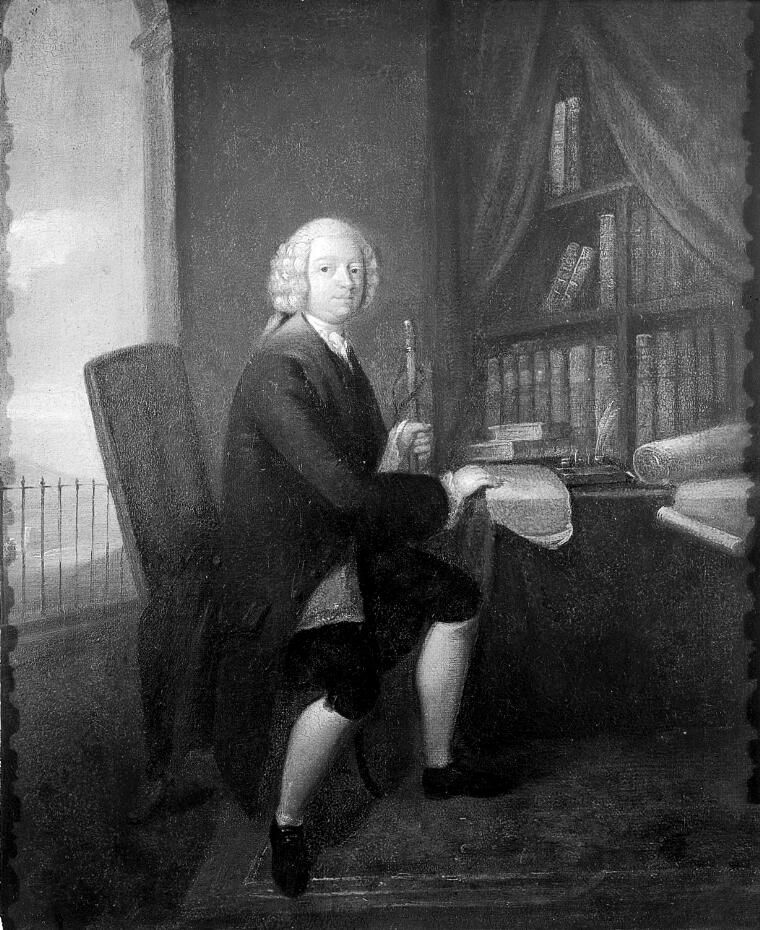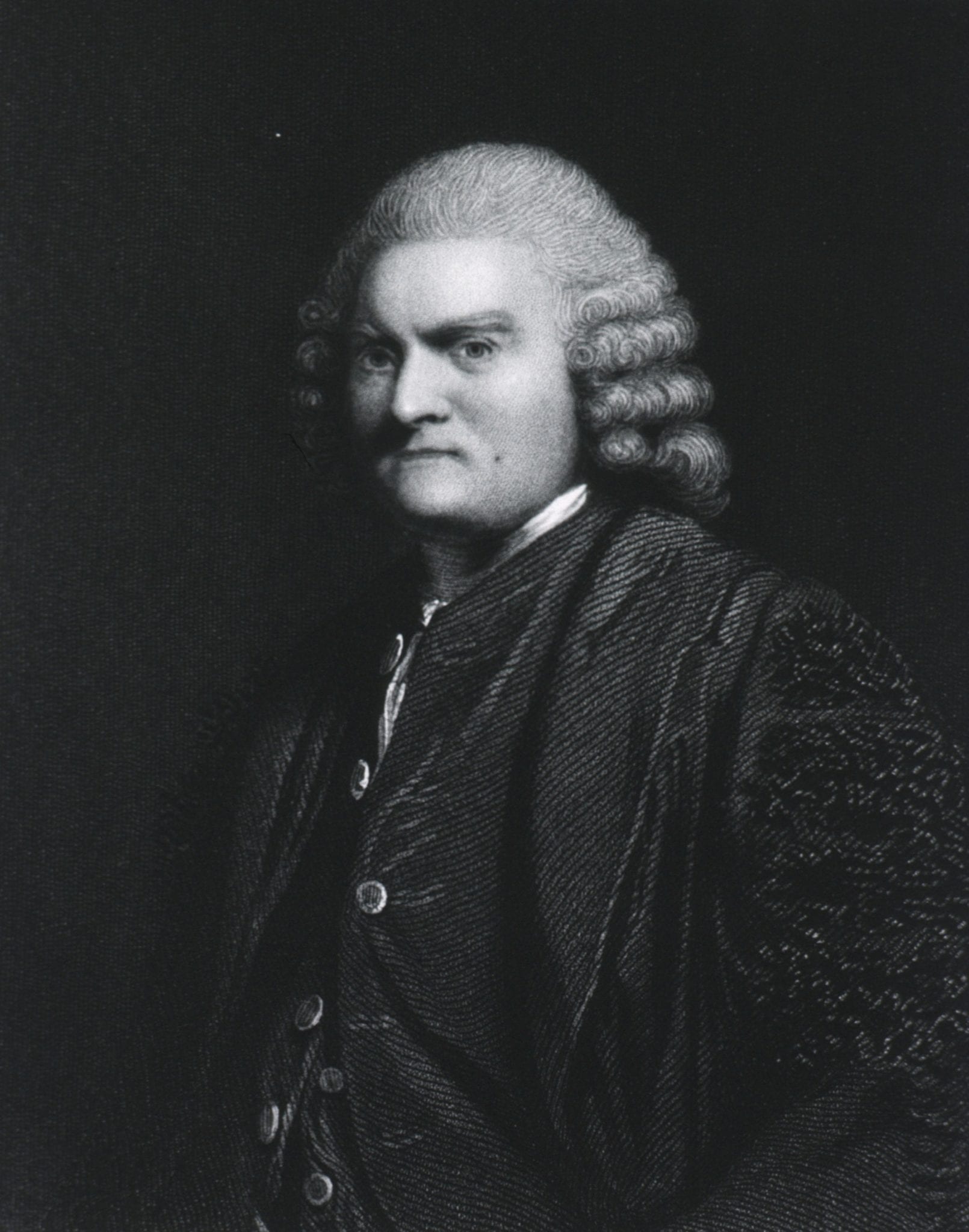 |
| Sir John Pringle. Oil painting. Credit: Wellcome Collection. Attribution 4.0 International (CC BY 4.0) |
At the end of the eighteenth century, Scottish doctors were more popular with patients than English ones because “their useful knowledge contrasted with the ornamental learning of English physicians who were Anglican or Oxbridge trained.”1 By 1825 almost 70% of all fellows and licentiates of the Royal College of Physicians were Scottish educated, including Richard Bright, Thomas Addison, and Thomas Hodgkin. Also from Scotland came John Pringle (1707-1782), who had made his contributions several decades earlier.
John Pringle was born during the reign of Queen Anne in 1707 and as the youngest son of a Scottish earl would have been expected to go into commerce. After first being tutored at home, he went at the age of twenty-one to study at the University of St. Andrews, where his uncle was physician and professor of Greek. To widen his experience in trade he was then sent to Amsterdam, at that time the major commercial center in Europe. But during a visit to the University Leiden, he chanced to listen to a lecture by Hermann Boerhaave, then the greatest teacher of medicine in Europe. This experience made him switch to medicine. He also became intimate friends with the celebrated physicians Gerard van Swieten and Albrecht von Halle, both at the time students of Boerhaave.2-4
Medical training in those days was brief, and within two years young Pringle graduated MD (1730). He continued his studies in Paris, then returned to Edinburgh and set up a medical practice. Between 1733 and 1744 he also served at the university as professor in a discipline curiously named Pneumatics and Moral philosophy, lecturing on stoicism, natural religion, Cicero, Marcus Aurelius, and Francis Bacon. His reputation growing but his income in Edinburgh remaining meager, he became, in 1734, the personal physician to John Dalrymple, 2nd Earl of Stair, and at the outbreak of the War of the Austrian Succession in 1742 accompanied him to Europe.
This conflagration at first pitted Austria, England, Hanover, and the Dutch republic against France, Prussia, and Bavaria. Among those fighting the French was also the Hanoverian King George II, who at the Battle of Dettingen in 1743 became the last English monarch to lead an army into battle in person. Pringle was put in charge as Physician General of the 16,000 strong British contingent and was concerned by the inadequate treatment of injured soldiers, the appalling sanitary conditions, overcrowding, poor ventilation, and inadequate waste disposal. He introduced sweeping reforms that included installing latrines and ventilation in the field hospitals to prevent the spread of disease. He even made sure that every soldier was issued a blanket for use in the field. He and his chief also negotiated an understanding with the French commander that field hospitals were to be deployed in a neutral area away from the actual fighting, a concept later adopted by other nations and leading eventually to the birth of organizations such as the Red Cross.
After the war he resigned his Edinburgh professorship and in 1745 was elected member of the Royal Society. His reputation growing, he was also appointed physician-general of the forces in the Low Countries led by the Duke of Cumberland and became his personal physician. He witnessed the decisive defeat of the Young Pretender (Bonnie Prince Charles) in 1746 at Culloden, where the Duke of Cumberland showed no mercy, leaving the wounded enemy soldiers unattended on the field for two days and placing sentinels on guard to prevent anyone from helping them.
Pringle settled in London in 1779 and spent the next few years studying the transmission of infectious diseases. At Leiden he had seen under Van Leeuwenhoek’s microscope ”small insects” in the feces of patients with dysentery and suspected they were playing a role in causing the disease. The prevailing theory, however, was that infectious diseases were caused by putrefaction. Somehow as a result of exposure to cold and damp the pores of the body would suddenly be closed, noxious substances would accumulate, inducing the humors to turn against the blood, fluids, and body organs, and causing them to putrefy. Between 1750 and 1752 Pringle read seven papers on putrefaction before the Royal Society and was awarded the Copley Medal, the most prestigious award in the United Kingdom, given annually “for outstanding achievements in research in any branch of science.” He coined the term “antiseptic,” and also experimented with substances that could inhibit putrefaction, such as ammonia.
 |
| Sir John Pringle, Bart. M.D.F.R.S. From The National Library of Medicine. Public Domain |
In 1752 John Pringle further expanded his ideas in a monumental monograph, Observations on the Diseases of the Army. He had concluded from his own observations that the symptoms seen in military camps were similar to those seen in prisons (“jail fever”) or in transport ships (“ship fever”) when men are kept at sea under close hatches in stormy weather. In all of these situations putrefaction was spread by close contact, overcrowding, inhalation, saliva, or excreta, and promoted by dirty bad air and poor ventilation. Pringle described in great detail how symptoms ranged from mild to severe, with fever, rashes, intense thirst, delirium, stupor, and death as frequent outcomes. He also made a connection with hospital, putrid, or spotted fever, which around 1760 came to be called typhus, from the Greek typhos, hazy or fog-like and referring to the stupor in the final stages of the disease. Pringle noted how recurrences were particularly fatal because they affected an already enfeebled body. Autopsies were carefully carried out, and in some cases abscesses were found all over the body, including a cerebellar abscess the size of a pigeon’s egg.
Pringle recommended stringent reforms, adequate ventilation to prevent contaminated air from causing putrefaction, and cleanliness such as changing more frequently the straw on which prison inmates slept. Prisoners were not to be discharged from jail wearing their old clothes but were to be provided with new ones. The clothes of executed criminals were to be burned. Certain antiseptic agents that inhibited putrefaction included sponges dipped in vinegar, ammonia, or agents prepared from non-perishable grains. His monograph was reprinted in several editions and over the next two decades was proclaimed by French, British, and German authors as the premier public health and military medicine publication.
Pringle also published a second influential monograph called Observations on the diseases of the army in camp and garrison. He was created baronet in 1766 and was appointed physician to King George III and Queen Charlotte in 1774. He maintained his interest in philosophy and the natural sciences, especially during the years from 1772, when he became president of the Royal Society, to 1778 when he resigned because of poor health, but perhaps also for political reasons, and was succeeded by the king’s friend Joseph Banks at a time when the influence of the Whigs was waning.5 During his tenure he had corresponded with Captain Cook, who had followed his precepts and had lost only one man during his entire voyage to the South Seas by insisting on absolute cleanliness and had provided his crew with adequate and healthy food to prevent scurvy and infectious diseases.
Pringle had been Benjamin Franklin’s closest friend since 1751 when Franklin arrived in London and was initiated into the Royal Society. They traveled together and Pringle communicated to the Royal Society Franklin’s letter on treating “palsies” with electricity, as well as offering advice when his wife Deborah developed a stroke in Philadelphia. He was friends with James Priestley, with Lord Auchinleck and his son James Boswell, and with David Hume and other philosophers of the day. He was an active representative of the Scottish enlightenment, which in a short time produced as many or more scientists and men of letters than their southern neighbors. In the same vein, Thomas Jefferson wrote that in science no place in the world could compete with Edinburgh.
Sir John Pringle died in 1782 and was buried in the church of St. James, Westminster. In his memory a monument was erected in Westminster Abbey, and there also remains a portrait of him painted by Sir Joshua Reynolds. Posterity remembers him as a pioneer in the fight against infectious diseases, an advocate for public health, a naturalist, and a philosopher. He shares with Ambroise Paré and Dominique Larrey the distinction of being one of the founders and fathers of military medicine.
Bibliography
- Herman, A. How the Scots invented the modern world. Crown Publisher, New York, 2001.
- Editorial. Sir John Pringle (1707-1782) – Military physician and hygienist. JAMA 1964;190:849.
- Hamilton, D. Sir John Pringle. Journal of the Royal Army Medical Corps 1964;110:1964.
- Atiyah, M. Benjamin Franklin and the Edinburgh Enlightenment. Proc. Amer. Philosoph Soc. 2006; 150: 591.
- Weidenhammer, E. Patronage and enlightened medicine in the eighteenth-century British military. The rise and fall of Dr. John Pringle, 1707- 1782. Social Hist. Med. 2015; 29: 21.
GEORGE DUNEA, MD, Editor-in-Chief
Spring 2021 | Sections | Physicians of Note

Leave a Reply